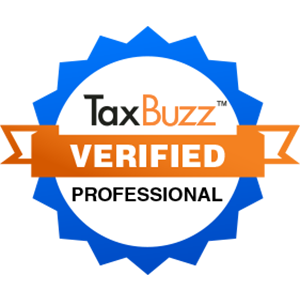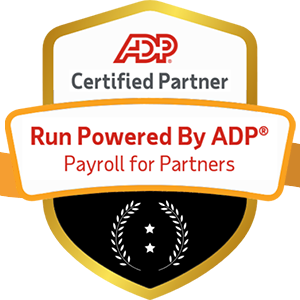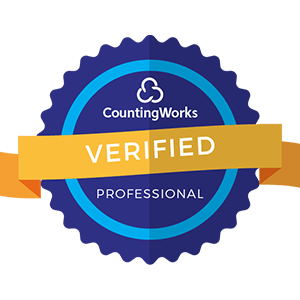
Recruiting and retaining top talent is crucial for any organization's success. However, with today's competitive job market and increased turnover rates, hiring and keeping great employees can be a significant challenge. In this comprehensive guide, we will dive deep into proven strategies and best practices for improving recruitment and retention at your company.

The first step to building a stellar team is recruiting the right people in the first place. Here are some key recruitment strategies to help you attract and hire top-tier talent:
Take time to specify precisely your qualifications and attributes for the role. This includes hard skills, soft skills, years of experience, education, technical abilities, etc. Having a well-defined job description and candidate profile makes it easier to pinpoint suitable applicants and assess their fit during the screening process.
As per Harvard Business Review, poorly defined roles lead to poor hiring decisions up to 80% of the time. Avoid this by thoroughly researching comparable positions internally and at other companies to understand the skills needed to succeed fully.
Outline all requirements clearly in the job description and share with hiring managers to align on the optimal candidate profile. Having alignment upfront prevents scope creep down the line.
According to LinkedIn's research, job postings clearly explaining responsibilities, requirements, skills, and expectations receive 30% more qualified applicants. Details attract better candidates.
Besides stating explicit requirements, consider implying cultural fit and values alignment in your descriptions. Using words like “collaborative,” “innovative,” or “relationship-driven” conveys the behavioral traits and working style that would fit your organization best.
With a well-defined role and requirements, you can more effectively source, screen, and evaluate appropriate candidates.
Talented candidates do not just look for roles; they look for the right organizational culture fit. Convey what makes your work environment and culture unique by:
This level of insight gives candidates a meaningful understanding of your people's priorities and work-life beyond just platitudes. Culture fit weighs more heavily in candidate decision-making, with 79% willing to accept a lower salary for an improved culture.
Aim for authenticity in your culture branding by having actual employees share transparent perspectives, not just polished, generic PR language. User-generated content from actual team members will always resonate more than overt marketing speak.
Cultural misrepresentation during recruiting results in poor retention later. Set honest expectations upfront on the positives and negatives to attract candidates who thrive in your environment.
While a good culture is critical, compensation still plays a significant role in attracting qualified candidates. Being competitive on pay makes your opportunities more enticing.
Research typical salary ranges for similar roles in your geographic area using aggregator sites like Glassdoor, Indeed, and PayScale—filter for factors like experience level and skills to find relevant data points.
Aim to match or exceed average market rates to make your offer packages compelling. Salary was rated as the top consideration by 57% of applicants surveyed by Indeed. Avoid viewing good pay as just an “extra” - it is now table stakes.
Besides the base pay, have compelling bonus and benefits policies as well like:
While you may not be able to match the pay scales of giant tech firms, thoughtful compensation packaging tailored to your industry norms and size can still attract talent.
Being vague about pay in job posts or delaying salary discussions to later stages is now a red flag for candidates. Be clear and upfront about target ranges to establish trust and credibility.
Career progression matters significantly to today's workforce across age groups. Employees now see ongoing learning and skills development as a core need more than just a nice-to-have.
Convey the tangible growth opportunities your company provides by showcasing:
This showcases your investment in employee success beyond just the initial hiring process. Having concrete examples of how you enrich careers makes a difference.
For instance, Adobe experienced a 10% increase in job application rates after highlighting their employee training progress and growth on their careers site.
The longevity and expertise of your current team also provide proof points on growth cultures. Recognize long-tenured employees on your site and have them share their career journeys.
Ongoing development is now table stakes for retaining top performers long-term, with 87% citing it as a reason they would stay with a company.
Employee referral programs that reward staff for successful recommendations are a proven way to source quality candidates who are a great culture add. Referred candidates tend to be a better organizational fit and have higher retention rates once hired.
Enable employees to easily share job openings within their networks via email templates, LinkedIn posts, or automated tools. Make applying easy for referrals by adding a form field for them to note who referred them.
Consider offering rewards like gift cards, cash bonuses, or additional PTO to incentivize referrals. Track program metrics like:
Measure results over time and expand the program to more roles if successful. For example, consulting firm Booz Allen saw time to fill reduce by 30 days and 1-year retention improve by 15% after ramping up their referral initiative.
To encourage participation, recognize top referring employees and share success stories of referred hires thriving at your company.
Your employer brand encompasses how candidates perceive you as a company and workplace. Crafting a compelling brand is vital to engaging both active and passive job seekers where they spend time online.
Leverage platforms like LinkedIn, Twitter, Instagram, Facebook, and TikTok to provide authentic peeks into your culture and environment beyond job ads. Share insights into:
Participate in relevant conversations like #WorkTrends, #FlexJobs, and #EmployeeExperience. Encourage leaders and employees to share their experiences as well.
Aim for diversity in the employees spotlighted to convey your commitment to inclusion. Use rich media formats like photos, videos, stories, and live video.
A strong employer brand makes it easier to attract talent, with 48% of job seekers ruling out a potential employer with a poor brand. Stand out by showcasing your people, not just job posts.
Your job application and screening process sets the tone for a candidate's first impression of your hiring experience. Make applying for opportunities easy and accessible through:
Additionally, train hiring managers and interviewers on ensuring an outstanding experience for candidates, not just screening for the role. Set expectations around:
With these measures, you can make applying at your company pleasant and straightforward instead of frustrating. Difficult, overly complex application processes hamper recruiting efforts.
In fact, over 50% of candidates have abandoned an application due to excessive requirements, while 60% had a poor perception of a company after a bad interview experience.
By focusing on candidate experience and care throughout hiring, you can position your organization as an employer of choice to attract top talent more effectively.

After recruiting top performers, thoughtful onboarding ensures they integrate into their new roles smoothly. Follow these best practices to boost new hire retention:
Onboarding should begin when an offer is accepted, not on the first official work day. The time between offer acceptance and the start date is crucial for accelerating new hire readiness.
Send welcome kits to help them prepare, including:
Scheduling a virtual onboarding kickoff call also enables them to ask questions to their manager in real time before arrival.
Looking beyond day one, it acclimates new hires faster: VMware saw time to productivity reduce by two months by starting onboarding pre-hire.
The first week is vital for establishing connections, so help new hires get to know their co-workers immediately. Schedule introductions to team members and cross-functional partners they will interact with daily.
Simple steps like lunch meet and greets, walking new hires around to meet people, tagging them into group Slack channels, and adding them to key meeting invites help put names to faces quickly.
Having go-to contacts creates a sense of belonging. Friendly faces in the office provide reassurance and enable new employees to build rapport before reaching out strictly for work purposes.
Assigning onboarding peer buddies provides new hires with a helpful point person for hands-on guidance on the tactical aspects of their role. Buddies can explain day-to-day processes, tools, and norms on the job.
Pairing them with onboarding mentors offers high-level coaching and advice to complement the tactical support from buddies. Mentors focus on setting new hires up for overall success in the organization.
Choose experienced team members who embody your culture and are invested in developing colleagues. Equip them with resources like:
Tips for being a great mentor/buddy
Onboarding checklists
Regular touchpoint guidance
Ways to provide feedback
Check-in regularly with buddies and mentors on the new hire’s progress and get their input on improving the experience.
These relationships accelerate new hire proficiency. Software firm Bamboo HR saw recent hire retention rise by 25% after launching a buddy program.
Have a structured training plan covering general company knowledge and role-specific skills training. Include a mix of onboarding training formats:
Structure the training agenda with a focus on the most critical knowledge first. Pacing out training avoids information overload.
Ongoing training is highly valued by employees, with 93% saying it boosts loyalty. But it must be relevant and engaging - outdated static presentations will not cut it.
Utilize multimedia formats, peer collaboration, on-the-job learning, and frequent knowledge checks for maximum impact.
Set clear expectations around the critical performance indicators, success metrics, milestones, and competencies required in the new role. Share this formally through:
Discuss goals collaboratively and align on development areas upfront. Defining precise expectations around the “what” and “how” of the role accelerates new hire productivity.
Without clarity, new employees can take 4-6 months to ramp up. Being vague widens the learning curve.
Creating transparency upfront instead enables proactive progress tracking against well-understood objectives.
In the critical first weeks, have frequent touchpoints between new hires and their managers to continue aligning on ramp-up needs as they arise.
Schedule daily stand-ups or weekly one-on-ones to check in on progress, unblock obstacles, affirm positive growth, and course-correct early on. Questions and doubts can be clarified in real time instead of new employees feeling lost or hesitant to speak up.
Managers should maintain an open-door policy outside formal meetings and be visibly available.
New hires may not always know which questions to ask, so the onus is on managers to proactively offer resources and guidance based on frequent conversations.
These early weeks of extra support provide the foundation for new hires to gain independence and thrive long-term.
Ask new hires about their onboarding experience within the first month before they forget details. Survey them anonymously on:
How well they understand their role and assimilate into the company.
Which areas of training were most helpful? Which were lacking.
How helpful onboarding resources and mentors were.
Any gaps or blockers they still face.
This facilitates critical feedback to refine and improve onboarding continually:
Training curriculum and delivery
Tools and resources provided
Manager involvement and support
Buddy/mentor relationships
Timeline and Scheduling
Do not wait till 90 days to gather input - new hire recollections will be vague. Frequent pulse checks reveal actionable improvement areas in real-time when learnings are fresh.
By investing upfront in onboarding excellence, you can retain your newly onboarded employees for longer through their ramp-up period.

Recruiting and onboarding are just the first steps - long-term employee retention requires focusing on engagement, development, and satisfaction throughout the employee lifecycle.
Apply these key strategies:
Implement public and private programs at multiple levels to recognize achievements consistently:
Corporate level awards: For outstanding project results, individual accomplishments, etc., across the company. Highlight these in town halls.
Functional recognitions: For team performance, new ideas implemented, cross-collaboration. Celebrate these in team meetings.
Peer-to-peer awards: Enable 360-degree recognition where colleagues can reward each other for help and contributions.
Manager recognitions: Have leaders send thank you notes, small gifts of appreciation, or shoutouts when employees exceed expectations.
Milestone awards: Acknowledge tenure anniversaries, career growth, and role expansions to celebrate employee journeys.
Recognition directly impacts retention, with 25% higher retention rates in companies that recognize employees. But it must be ingrained, not just one-off initiatives. Training managers to identify proactively is critical.
Making career advancement possible internally motivates employees to stick around and move up the ladder instead of jumping ship. Develop clear promotion frameworks outlining skills and milestones to guide progression.
Highlight successful promotions within the company via internal comms. Leadership roles filled internally have a 70% success rate versus just 40% for external hires.
Burnout and exhaustion are the top reasons for turnover. Avoid this by leading by example in enforcing work-life balance model behaviors like not sending emails after work hours, taking vacations, and prioritizing family commitments.
It also offers benefits like flexible work arrangements, remote work options, and wellness programs. Employees are willing to take an average 8% pay cut for better work-life balance.
Make pulse surveys, anonymous feedback, and regular 1:1s a consistent part of your culture. Check-in often on how engaged and satisfied employees feel, and incorporate feedback into improvements.
HR advisory firm TinyPulse saw turnover reduce by 31% in companies using Pulse surveys compared to the industry benchmark. Proactively measuring and acting on satisfaction metrics makes employees feel heard.
Employees who feel stagnant and stuck in their roles start looking elsewhere. Create development plans for skills training, stretch assignments, and learning opportunities.
Rotation programs that let people explore new functions also build engagement. Upskilling helps retain top performers, with 95% of employees saying upskilling opportunities are important.
The strategies above require commitment and focus but enable organizations to improve recruitment and retention tangibly. Let’s recap the key recommendations:
Define roles and requirements clearly.
Showcase your company culture authentically.
Offer competitive pay and benefits.
Highlight development opportunities
Implement employee referral programs.
Build your employer brand on social media.
Streamline and optimize your application process.
Start onboarding before day one.
Facilitate early peer connections.
Provide onboarding buddies and mentors.
Deliver structured training
Set clear performance expectations.
Check in frequently at first.
Gather feedback on the experience
Build a culture of recognition.
Promote from within.
Support work-life balance
Frequently check on satisfaction.
Provide development and growth.
With the accelerated pace of change, recruiting and retaining top talent remains a critical priority for HR leaders. By following the tips above, you can position your organization to attract, engage, and grow a stellar team for the future.
In today's ultra-competitive talent landscape, having exceptional recruitment and retention practices is imperative for organizational success.
By leveraging the strategies outlined in this guide, companies can transform their ability to attract top-tier talent, reduce hiring costs, onboard new hires effectively, engage and develop employees, and reduce regrettable turnover.
While the specific tactics will differ across teams and industries, the fundamentals remain consistent - clearly define roles, showcase culture authentically, simplify hiring processes, invest in new hire onboarding, offer competitive compensation and benefits, provide development opportunities, recognize achievements, promote from within, support work-life balance, and frequently measure satisfaction.
Making recruitment and retention a strategic priority requires commitment from leadership and HR. However, the long-term benefits of productivity, innovation, and growth through exceptional talent management are undeniable.
As the renowned organizational scholar and author Peter Drucker stated, "The only thing worse than losing your best employees is failing to develop them to their full potential. Development should be a higher priority than retention."
Focus first on growth, and retention will follow. With the tips in this guide, companies can seize the opportunity to refine their talent practices and develop truly world-class teams for the future.


